Lavender is a common name among many people around the world.
It is a beautiful flowering plant that has a slight purple shade. Besides its nice looks, lavender has many health benefits and is also used in cosmetics.
The plant mainly thrives in Mediterranean climates where it grows naturally and requires minimal management even during the cold seasons.
That said, lavender can survive in many regions. The plant can go dormant in winter and sprout back in spring.
In Most Cases – It stays lush even when the temperatures are low. However, just like other hardy plants, it is essential to care for and prepare them for winter. The guidelines for caring are relatively the same in most regions that experience a distinct cold winter.
Lavender In Winter
Lavender can be grown either indoors or outdoors.
However, these beautiful plants grow best outside, where they can enjoy the most sunlight.
In most cases, they are grown indoors for their fantastic scent. The scent brings a sense of pleasantness and calmness to the room.
Lavender can be an annual or perennial plant depending on the variety. If you live in USDA zone 5, you can grow your lavender as a perennial plant.
In such climates, the plant survives outdoors even in winter, provided you grow the required variety.
You can still grow lavender if you live in colder regions.
However, if the temperature gets extremely low in winter, and your lavender may be affected. Therefore, growing them indoors should be a priority for those living in the country’s northern parts.
Irrespective of where you live, you need to prepare your lavender for winter to prevent it from rotting or drying out.
For Instance – Try to improve the garden soil so that it becomes adequately drained. It would also help if you used organic matter or sand to improve the drainage. Well-drained soils reduce the chances of the roots rotting.
Also, you can add mulch to the soil’s surface to improve drainage.
Lastly, as the colder months approach, reduce or stop watering the lavender. Very moist soil can lead to rotting.
There are other procedures for preparing lavender for winter, but improving the soil drainage is essential.
Lavender Varieties To Grow During Winter
English lavender is the most common and also the most weather-resistant species available.
Despite its name, the plant originated from the Mediterranean coast of Africa and Europe.
It has dark purple flowers, and it’s pretty hardy. The woody plant can grow up to 3 feet tall with green leaves.
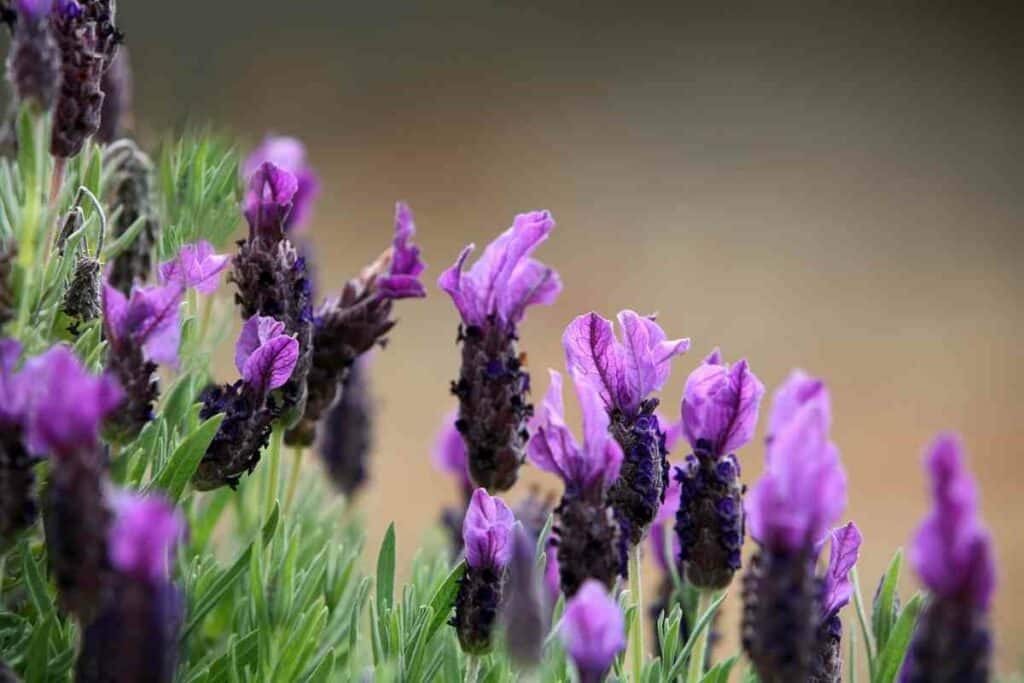
In temperate winter climates, its leaves are green with aromatic white or pink colors. Even though English lavender thrives in sunny areas, it also requires a bit of shading.
English lavender is the best species to grow if you live in zone 5 or warmer.
These zones have a mild winter, and the lavender plant will survive outside. However, it can be grown indoors in colder regions with proper management.
French, Italian, and Spanish lavender are mostly grown indoors during winter.
These species cannot withstand the harsh frost and are often transferred indoors using clay pots. However, these species can be grown outside if you live in zone 8 and above.
How To Plant/Root Lavender
Lavender grows well in well-drained soils that enhance proper nutrient uptake.
The soil needs to have a neutral to alkaline pH. You can purchase a soil pH tester at your local supply store to determine the pH level.
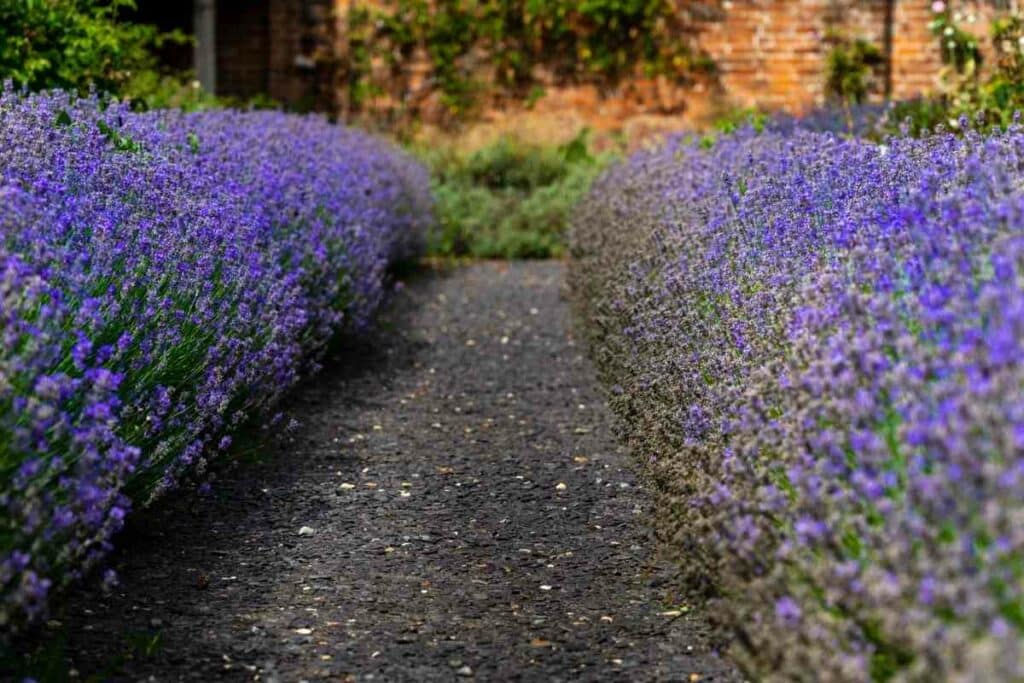
If your soil is too acidic, you can increase the pH level by adding lime into the bed. Notably, you can still use wood ash if you do not have lime.
Another essential factor to consider is drainage. If the soil is not well drained, add a bit of sandy soil to the bed.
Keep In Mind – While mulch can improve drainage over time unless necessary, do not mulch the bed since the lavender plant is quite tolerant to drought. Also, mulches can promote fungal growth due to dampness.
Once you have prepared your soil, cut healthy stems of blooming lavender and prepare them for planting. You should only remove the leaves halfway down.
Therefore, the top half of the stem should still have leaves before planting.
Plant the stems in well-drained fertile soil. Watering should be done regularly to ensure the roots develop.
After about a month, the planted stems should have developed adequate roots.
The stems should then be transplanted into a pot to allow the root system to develop adequately. When the lavender has strong roots, you can plant them in your garden.
Heads Up! Plant your lavender early enough so that the plants have established roots before winter kicks in. This will help them better cope with the harsh winter conditions.
How To Prepare Lavender For Winter
If you live in zone 5 or warmer, your lavender will overwinter well with only minimal management.
If it gets too cold, you can mulch with straw to provide a barrier against wind and cold. Also, you can place fabric covers to prevent the stems from frost.
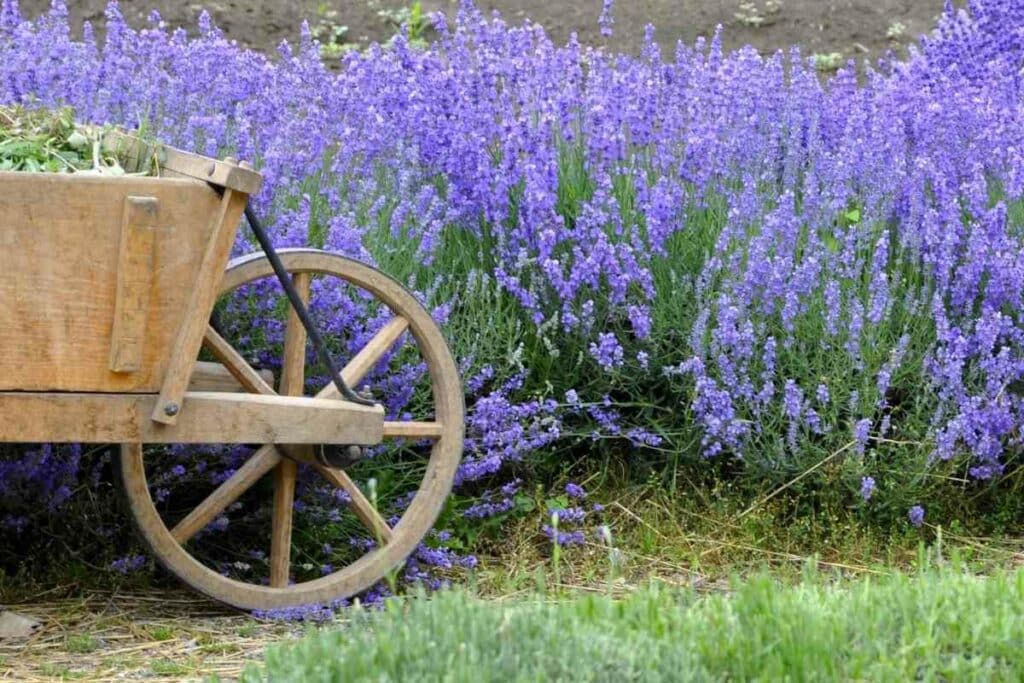
You could put your lavender indoors if you had planted them in a pot. However, ensure to place them near a window where they can still enjoy the sunlight.
That said, keep the lavender pots away from direct heat from heaters which can cause the stems to dry out.
Watering in winter should be done occasionally. Too much water causes the roots to rot. Moreover, since there is no evaporation, most of the water is retained in the plant system.
English lavenders are hardy, and you can leave them in your outside garden over winter. The variety can survive temperatures as low as -20 degrees F.
Other species such as French and Italian lavender will not survive if the temperatures fall below 10 degrees F.
Key Takeaway – Do not prune your lavender in winter; otherwise, they might die of frost. Pruning should be done in early fall or spring when the plant blossoms.
How To Water Lavender During Winter
During the winter, the lavenders in the garden are in a state of dormancy and therefore do not require watering.
These plants are shrubs and are drought tolerant. Thus, even in warm seasons, they do not need much water.
The lavender plant has to deal with too much water from the winter rainfall.

Therefore, watering will only make it worse.
However, if the lavender is not well established, it will still need to be watered monthly during winter, especially in warm areas.
If you have French or Italian lavenders in your garden, it will be necessary to put them indoors during winter.
If left outside, they will be destroyed by frost. In this case, the lavender should be watered occasionally to prevent it from drying out.
How To Prevent Lavender Roots From Rotting During Winter
During winter, lavenders are not only affected by freezing temperatures and frost but also by unsuitable soils.
This is because the rate of evaporation is meager during winter.
As a result, if the soil is not well drained, it will retain much of the water, making it very damp.
Dampness causes the roots of the lavender to rot and eventually kill the plant if there is no intervention.
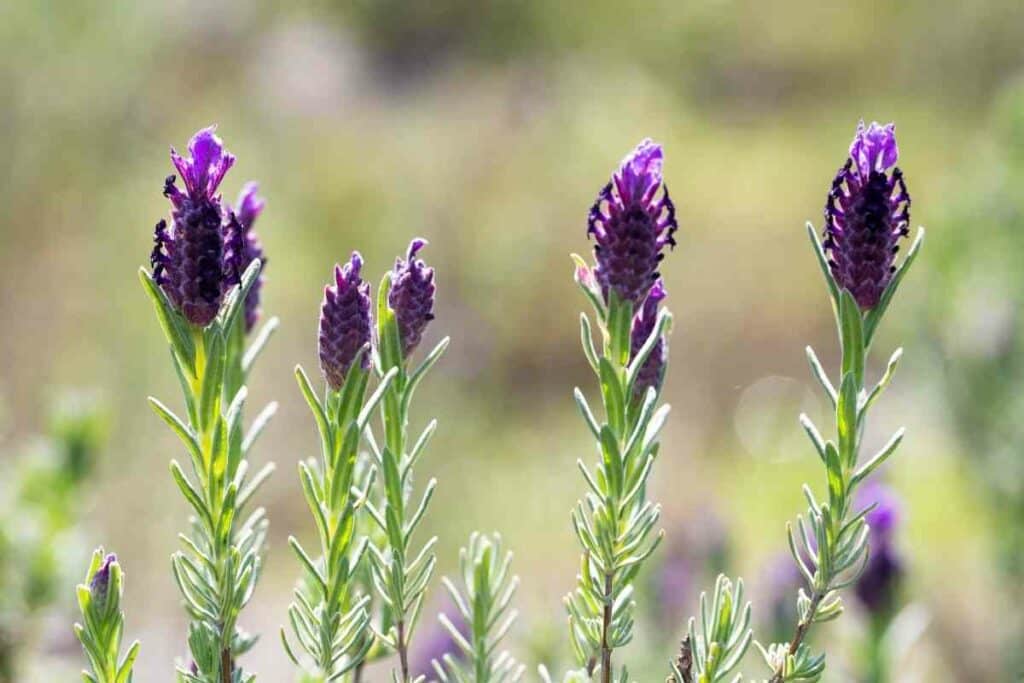
Ensuring the plant grows in well-drained soil is vital if you do not want your lavender rotting. The soil should be porous to allow water to drain effectively.
That`s why many people grow lavender in pots where they can manage the soil appropriately.
In This Case – You should mix potting soil and gravel or sand in a ratio of 70% to 30%, respectively, if you live in regions that experience mild winter.
In colder areas susceptible to high winter rainfall, a ratio of 50:50 is required to ensure the roots don’t have a damp environment.
Important Notes To Ensure Your Lavender Survives Winter
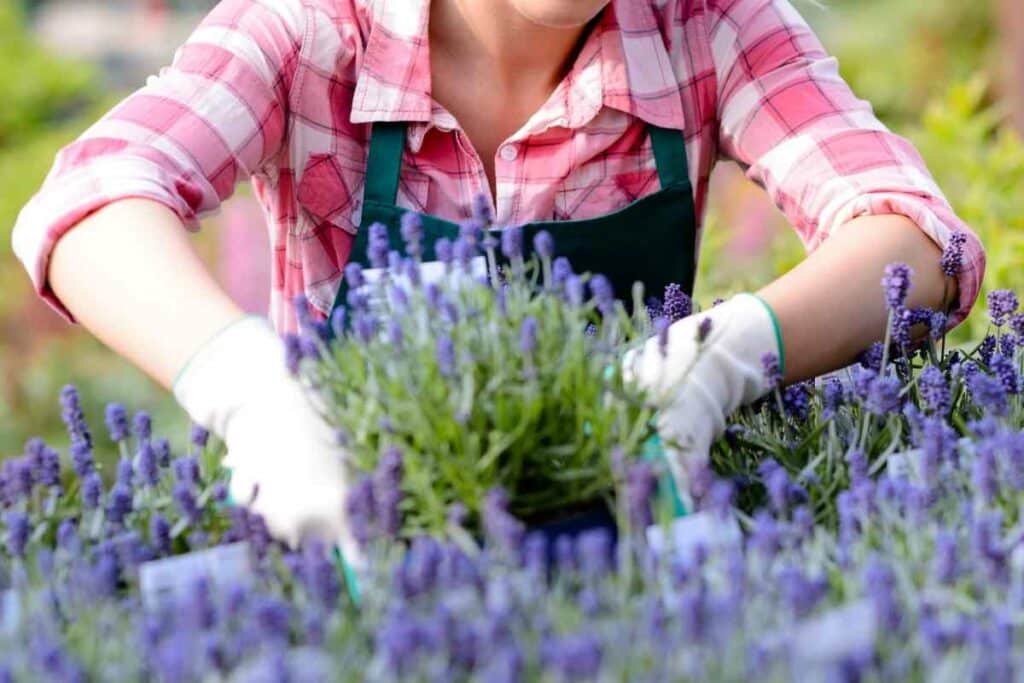
Once winter has set, the following practices will ensure your plants survive the harsh weather.
- Sunlight is vital for the survival of lavender. Place your lavender pots close to the windows so that the plant can make its food.
- Do not fertilize lavenders during winter; wait until spring.
- Do not prune your lavender during winter. Pruning should be done in early fall or late summer.
- Avoid overwatering. In fact, during winter, the lavender hardly needs watering. Maybe occasionally for potted indoor lavender.
- It would be best if you cleared all fallen leaves before winter. Decomposing matter causes the rotting of the roots.
- Ensure the soil is well drained to avoid any damp conditions.
- English lavender is hardy and will withstand cold temperatures. Other species should be kept indoors, especially in regions that have a colder climate. However, ensure they are not located close to the heater since they can dry out.
Final Thoughts
Lavenders are beautiful plants with a scent that resonates with calmness.
Although the plants were originally from the Mediterranean coast of Europe, they can be grown in most regions of the world.
However, it is vital to identify the variety of the lavender before planting it in your garden.
English lavender is hardy and will withstand cold winter temperatures.
Conversely, French and Italian lavenders are less hardy and require being kept indoors in regions that experience freezing winter.
In any case, ensure the soil is well drained and avoid over watering your lavender plants.
